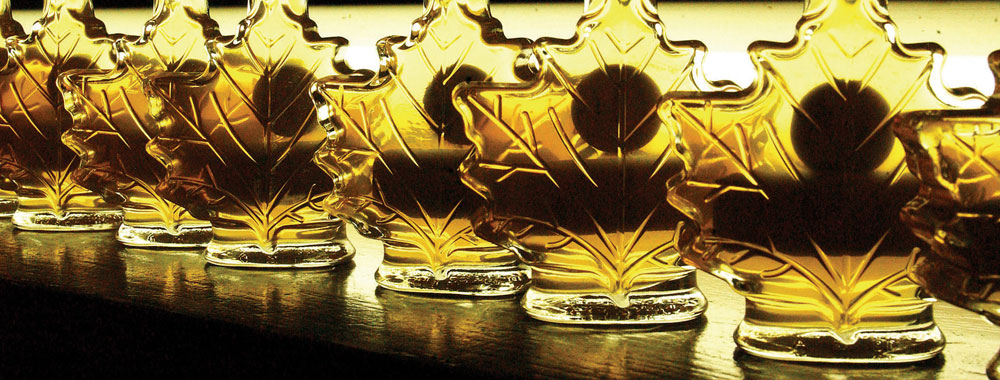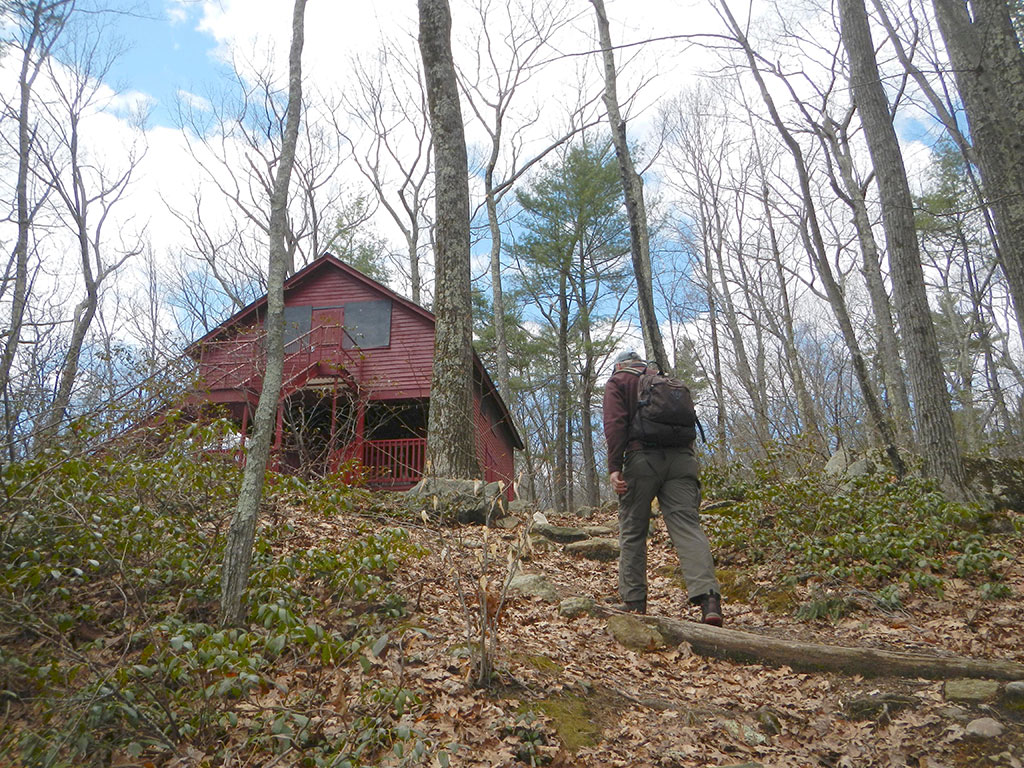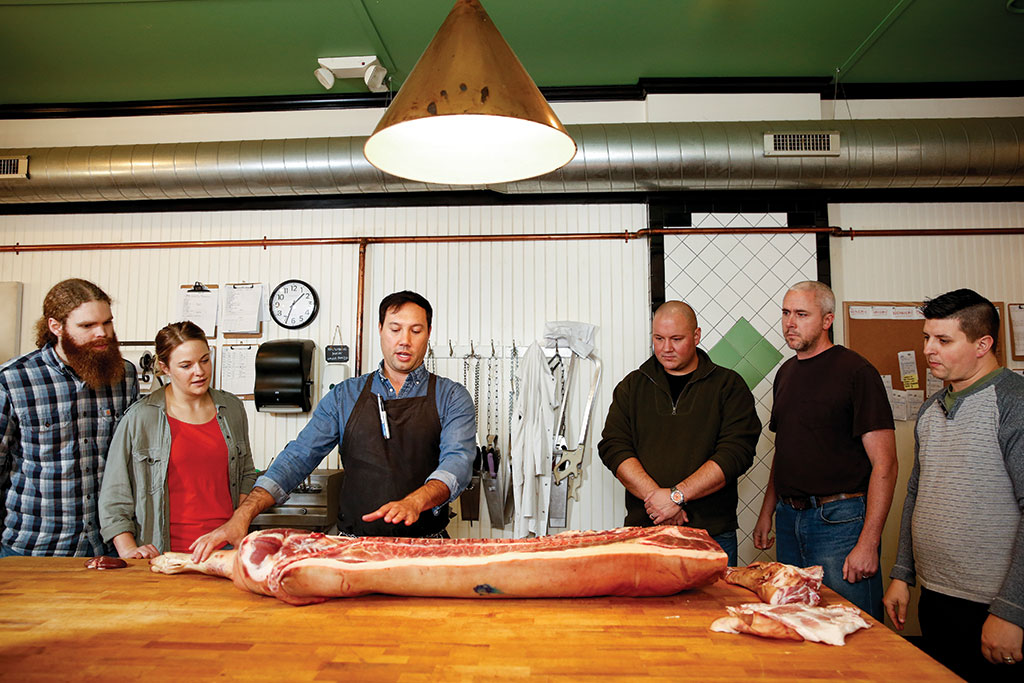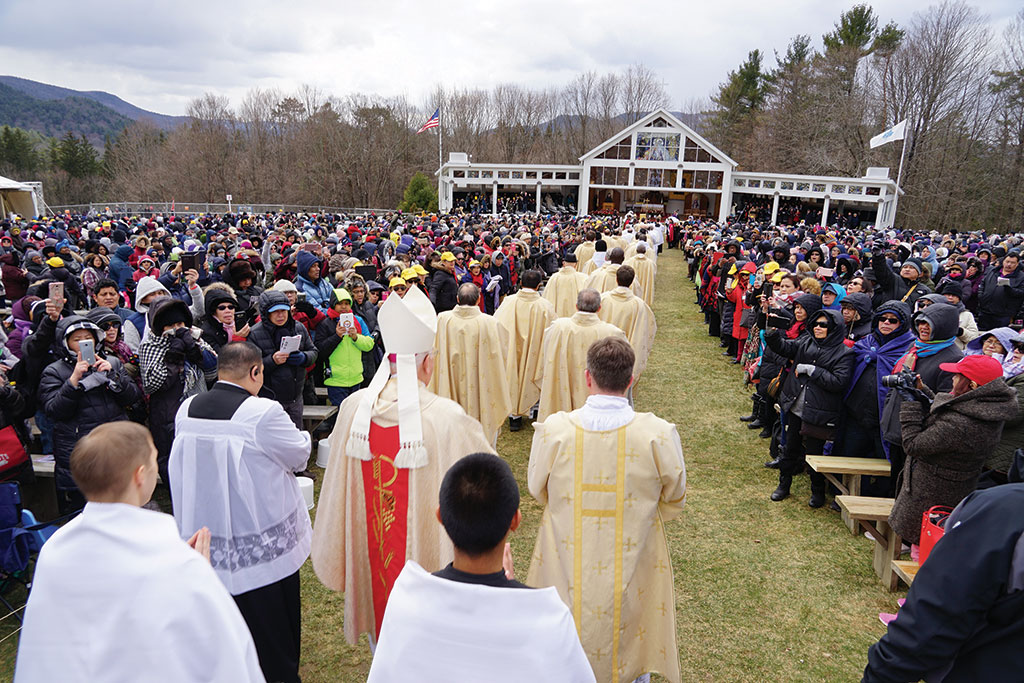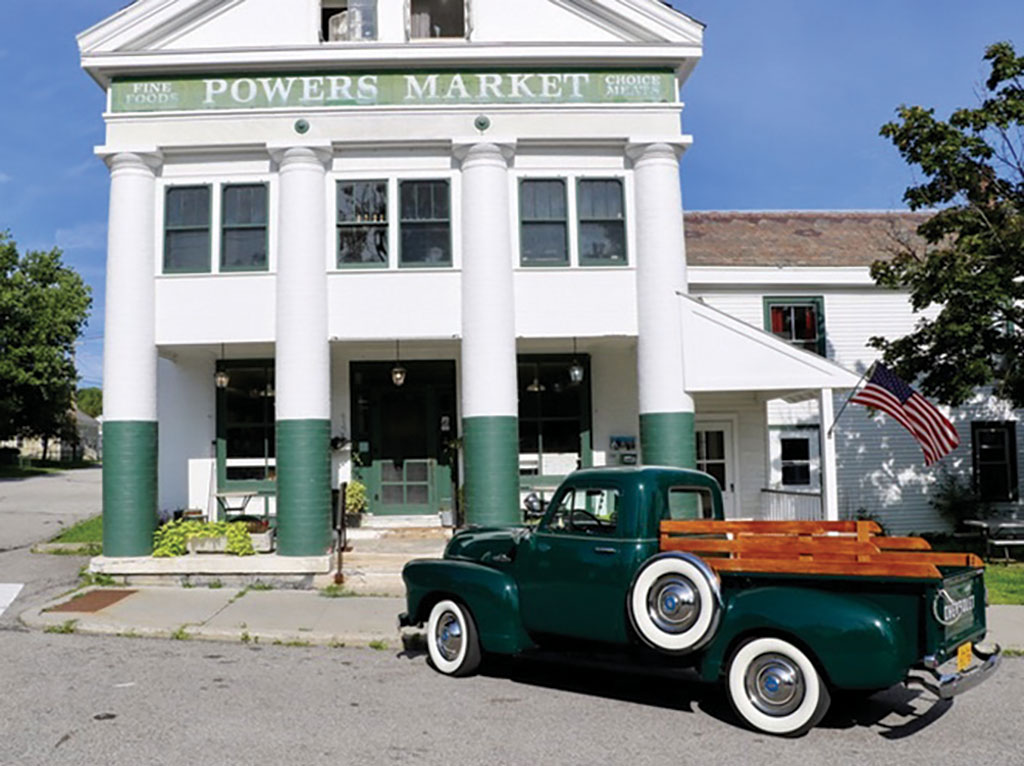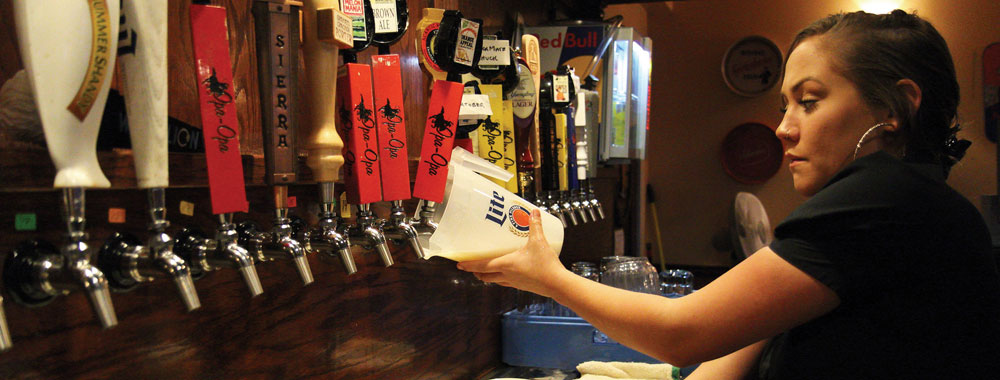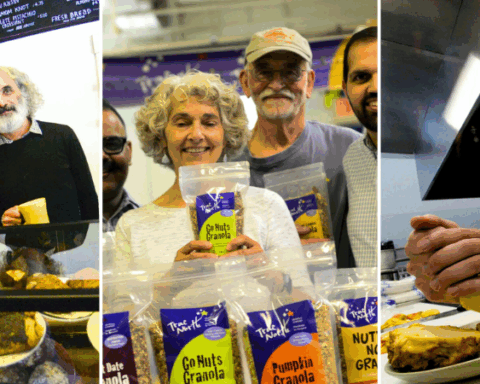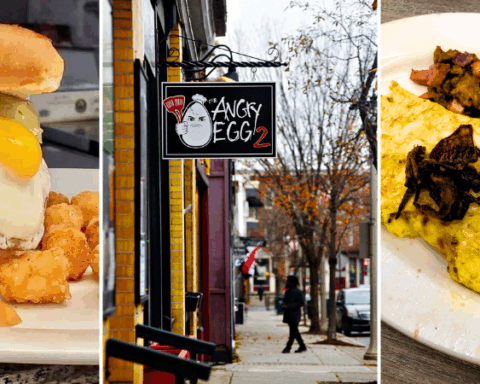
Editor’s note: In the UpCountry, we get the chance to celebrate the maple sugaring season over two weekends. This year, in the Berkshires, maple producers will open their sugarhouses on Maple Weekend, March 16 and 17. The following weekend, our Southern Vermont maple producers will follow suit during Vermont Maple Open House Weekend on March 23 and 24.
More information on these events can be found at massmaple.org and vermontmaple.org. For our list of must-visit sugarhouses, click here.
The following column, “Acres at Large,” first appeared in the March 1975 edition of UpCountry with the title “Maple Sugaring.” The column has been edited for length.
By John C. Page
Smart money says that Jim Edgerton, who lives beside the Battenkill in West Arlington, Vt., doesn’t really mean it when he says he has sugared for the last time. Jim lives in the big white house that hits you in the eye when you go through the covered bridge over the kill from Route 313. In case two big white houses hit you in the eye, and they will, the one on the right is where Norman Rockwell lived when he was in Vermont. The other is Jim’s place.
When Jim says he isn’t going to sugar again, he also notes that the only reason he sugared last time was that “sugaring is in my blood.” Passers-by have noted the shed full of firewood, waiting to heat the evaporator, in the maples stretching 2,000 buckets up the hill and along the kill. But it’s the “sugaring in the blood” that tells when the sap starts flowing. We suspected that the maple content of Jim’s blood qualifies him to be an expert on the sugar shortage. Being a true Vermonter, he’s apt to do more than complain about it.
What’s more, we figure he must have read about New York state beating out Vermont on maple production by a whisker last year, and he may decide he is that whisker. No true Vermont sugarmaker will admit that New York ever made a decent gallon of maple syrup. Should they succeed sometime, there’s still no way that they could ever make a gallon of good Vermont maple syrup. Some New Yorkers have been known to buy Vermont labels and slip their inferior syrup into trade channels. For some unknown reason, Vermonters are a bit more tolerant of Massachusetts and New Hampshire producers, probably because they’re such a minority. We shouldn’t, but will mention the fact that Quebec makes more syrup than all of us put together and is beginning to make a little good syrup.
People who produce maple syrup are a breed apart. There are a few jobs on earth that are more demanding than gathering sap in deep snow, and if the snow goes, then it is replaced with mud. Though you might not think so by watching, the person doing the boiling has about all he or she can do to keep up with the job. You handle a lot of the bulk in the form of sap and wood. The product that comes out of the spigot doesn’t take up much space and it’s pretty valuable.

The economics of sugaring could be best stated by the old Vermont belief: “You make money sugaring and you earn every cent you get.” The fact that only one out of 10 of Vermont’s maples is tapped each spring is some indication of how hard the job is and how few people want to make an investment in the needed equipment. Going into the business on a commercial scale means you have got to stick with it year after year in order to get your investment back and have something to jingle.
People who are going into it commercially, and we generally consider 300 taps and up in this category, would do well to spend a year or two working with an established operator and learning the ropes before plunging in on their own. Folks who have just a few trees can get rigged up fairly easily. Here you should start with a couple of dozen taps and then expand if your ambition and enthusiasm get whetted sufficiently by the end product. Where the object of large-scale operation is to make a good product that will result in a decent return for your efforts, backyard sugaring should be made a fun thing, a family project, that gives you a little golden syrup at the end of a rainbow of effort.
Kids take to sugaring in the backyard like a duck to water. There is something about it that sustains enthusiasm. If you don’t think so, wait till your neighbors’ kids appear to help. They’ll come again and again. Their reward obviously isn’t getting the syrup themselves, but to take part in the goings-on.

Here is how you go about being a backyard maple buff: The trees to tap should be hard maple, sometimes called sugar maple or rock maple. The other maples will produce sap, but their sugar content is lower and it will take more boiling to get syrup. You can tap any healthy tree, even your ornamentals. Tapping in a sensible way does not hurt a healthy tree. Many have been tapped annually for 100 years.
If a tree is under 10 inches in diameter belt high, don’t tap it. For trees 10 to 14 inches, make one tap. For trees 15 to 19 inches, two taps, and for the larger ones three taps. Sap will run after freezing weather when the temperature gets up to 40 degrees or so. It will run, with alternate freezing and thawing, depending on where you live. For a few trees, you can tap with a regular 7/16-inch wood-bit, though special tapping bits are available. Drill a 3-inch hole in good live wood. You slant the bit slightly upward as you drill so that the sap will run down out of the hole. Get the shavings out of the hole before driving in the spout. You then drive the iron or galvanized spout with a couple good taps of a hammer. If you drive it in too far, you’ll split the bark and wood around the hole. The spout should be in just tight enough to support the bucket full of sap.
For buckets, you can use galvanized sap buckets, plastic bags or any clean container. If containers are too small, you’ll have to gather often, as they fill up quickly in the good run. The buckets should be covered to keep out rain.
An average tap will give you 15 to 25 gallons of sap, depending on how good a maple year it is. It takes about 40 gallons of sap to make a gallon of syrup, so the expected yield per tap is 3 to 4 pints. Sap must be gathered and boiled down as soon as possible. Allowing it to get warm prior to boiling results in dark, poor-quality syrup.
The object of boiling, or evaporating, is to get rid of the sap’s water, leaving the syrup. There are several methods of going about this on a small scale. You can boil it down on the kitchen stove, but this will in time, cause discoloration or worse of your ceiling and walls. You can make an outdoor arch of bricks, blocks or stone and place a pan over the arch and use a wood fire under the pan. The larger the flat bottom of the pan, the faster you will be able to drive off the water. Some folks use a hot plate or a gas-burning stove on the back porch. Of course, we have the ancient method of hanging an iron kettle on a tripod and building a fire under it. In this case, a stone wall to confine the fire and direct heat up or against the kettle is desirable, leaving a space in the wall to chuck in the wood. If you want to get a little bigger and have 100 or so taps, you can utilize small evaporators, 2 x 6 or 2 x 8 feet in size, made commercially. In these cases, you generally have to build a small sugarhouse for the evaporator and some wood storage.
When you have driven off the water and as the syrup point is near, foaming occurs. It can be stopped by hanging a piece of bacon or salt pork from a string over your pan. When the foam touches the pork, the surface tension of the bubbles is broken and it will settle down.
A candy thermometer will tell you when you have syrup. Continue boiling until the temperature reaches 7 degrees above the boiling point of the water. If the candy thermometer shows water boiling at 210 degrees at your location on that day, then the syrup point is reached at 217 degrees. Keep a little extra sap on hand to dump in just in case you get syrup quicker than you expected. Backyard sugarmakers may find it helpful to boil the sap down to where it starts getting thick and then finish it up on the kitchen stove, where it can be removed easily when the syrup point is reached.
You can get severely burned with sticky maple syrup, so you must handle it with extreme care and the kids must be made aware of this danger, too.

Maple syrup has a natural grittiness which can be filtered out. Strain it through several layers of cloth or let it settle out and pour off the top. Commercial filters are used by large producers.
Syrup can be stored in canning jars or any jar that can be closed tightly. If the syrup is too thin, it can sour on you. If it is too thick, sugar crystals will form in the jar. You can restore sour syrup simply by bringing it to a boil and skimming the surface. Refrigerating also slows the spoiling process.
The process of boiling requires fairly constant attention.
You will end up with precious little syrup in the bottom of your pan at the end. If the pan isn’t level, you’ll have an inch of syrup on one side and none on the other — you’ll burn up the rig and spoil both the pan and the syrup. More than one commercial-sized evaporator has been ruined when the frost heaves unleveled the evaporator, and the same can happen in the backyard.
I won’t guarantee any rising backyard sugarmaker that he’ll be able to get the “sugar in the blood” level as high as Jim Edgerton, but I will guarantee you that you’ll think your own syrup is the best you ever tasted. Jim knows his is.
